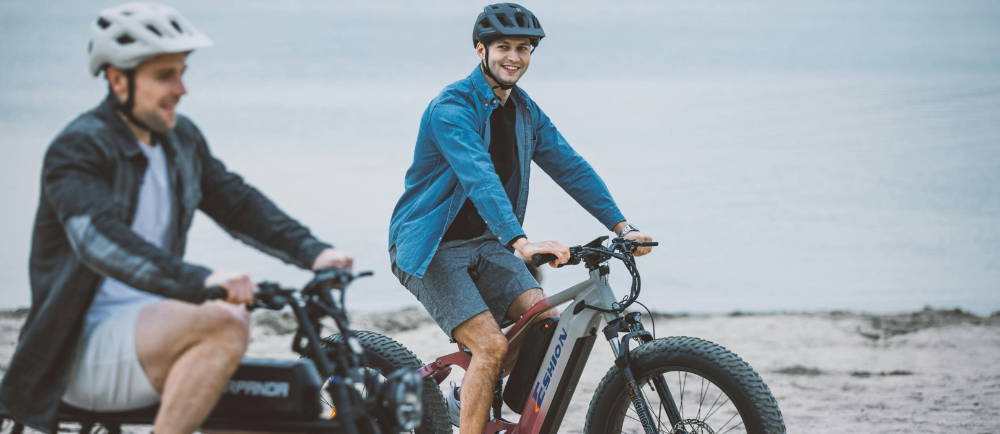Studies have shown that e-Bikes with a Bosch drive unit use about 11Wh per mile. This energy consumption translates to an average CO2 emissions amount of around 3.5g per mile. In comparison, a car emits about 240g of CO2 per passenger mile, and public transportation emits 80-176g of CO2 per passenger mile.
E-Bike Fitness: How to Turn Your Ride Into a Workout
Written by: Rémy Rossi | June 20, 2025 | Time to read 4 min

More about the Author: Remy Rossi
Rémy Rossi is a bike writer, mechanic, and educator who got his start in community-based bike shops and co-ops. With a decade in the industry, he still wrenches on bikes when he can and plays bike polo on a fixie.

👋 Interested about Upway?
E-Bikes are training tools, not cheat codes
When it comes to training, the different assist levels of electric bikes are actually an advantage. You can toggle through the modes to adjust the assistance to suit your desired workout— you can hit certain goals related to heart rate, total mileage, or total elapsed time. This adjustability also makes riding a bike more accessible for everyone, encouraging people to hop on a bike and get active.
Working hard, just over a longer distance

Often, workouts are less about the maximum effort you put in and more related to other metrics like time, distance, and average effort. Longer rides on an e-Bike can extend the workout, and there are other methods to ensure a successful training session— things like low-intensity steady state (LISS) and high-intensity interval training (HIIT).
Ride in lower assist levels
You can do resistance training

View the added heft of electric bikes— though there are plenty of lightweight e-Bikes— as a potential training tool instead of a drag on your two-wheeled workout!
A more enjoyable workout

Another 2021 study showed that while workout metrics like heart rate and oxygen uptake were lower when riding an e-Bike, they were still at or near the moderate intensity level. The main difference is that the perceived exertion and difficulty were lower on the e-Bike compared to riding a traditional bike.
Start e-Biking, and you’ll ride more

Frequently Asked Questions
How much power does an electric bike use?
Helmets are always a good idea when riding any type of bike, and some states require them. Pennsylvania, Massachusetts, and Oregon are some of the states that require wearing a helmet when riding an e-Bike, though most states don’t have a legal requirement.
Yes, e-Bikes are safe to ride, and they continue to get even safer due to better battery technology and safety certifications. Riders should keep in mind, however, the additional weight and higher speeds of electric bikes. Upway recommends against purchasing low-quality e-Bikes or used models that haven’t been inspected by a professional.
Key Takeways
- Adjustable assist levels let you control workout intensity, making it easy to train at your pace— whether you're aiming for a HIIT session or a steady-state burn.
- E-Bikes help you ride longer and more often, increasing total exercise time while expanding your range and confidence.
- The joy factor is real: E-Bikes make workouts more enjoyable and accessible, encouraging consistent movement and active habits.


